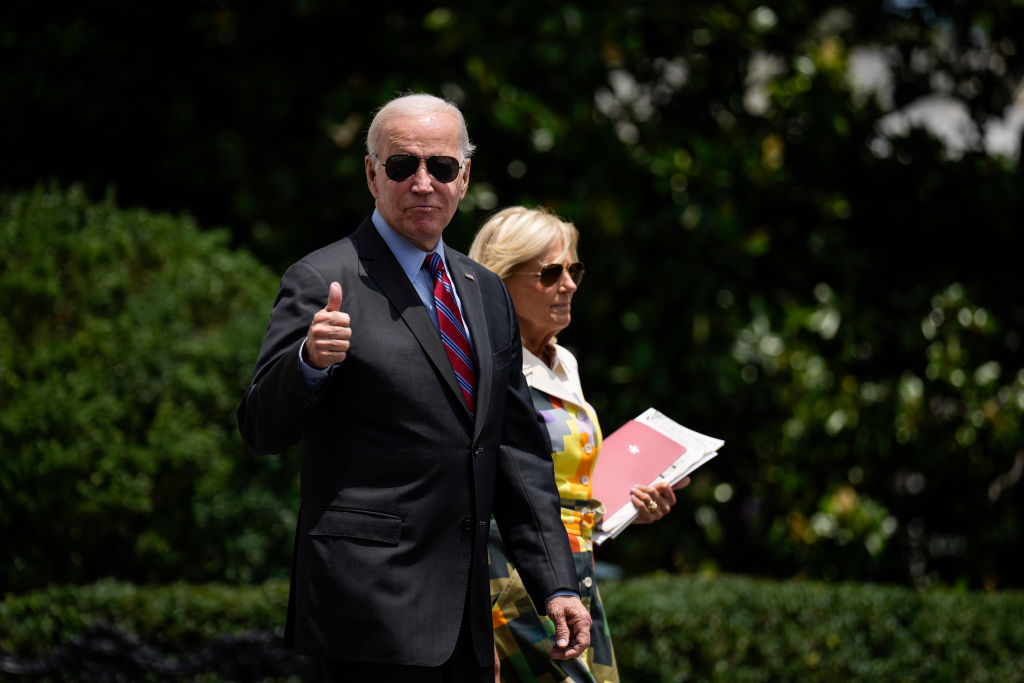Biden Administration to Erase $39B in Student Debt for 804,000 Borrowers
 Credit: Drew Angerer / Staff / Getty Images
Credit: Drew Angerer / Staff / Getty Images- President Joe Biden announced the income-driven repayment plan waiver in early 2022.
- The Department of Education will soon begin adjusting borrowers’ accounts.
- Notably, months spent in deferment will count toward the timeline for student loan forgiveness.
- Many borrowers will see their entire loan balances erased thanks to this waiver.
Update: The Biden administration extended the deadline to June 30, 2024, to consolidate and benefit from the IDR waiver. Borrowers with commercially managed FFEL or Perkins loans can consolidate before this date and benefit from the one-time account adjustment.
The Department of Education on Friday finalized a plan that will erase $39 billion in federal student loans for borrowers enrolled in an income-driven repayment (IDR) plan.
The IDR waiver, first announced by President Joe Biden’s administration in April 2022, will benefit borrowers who made late or partial payments on their loans, were in extended forbearance, or spent time in deferment. The administration says the one-time account adjustment will right past wrongs carried out by federal student loan servicers.
Approximately 804,000 will benefit from the IDR waiver, the Department of Education (ED) said.
“For far too long, borrowers fell through the cracks of a broken system that failed to keep accurate track of their progress towards forgiveness,” ED Secretary Miguel Cardona said in a statement.
“By fixing past administrative failures, we are ensuring everyone gets the forgiveness they deserve, just as we have done for public servants, students who were cheated by their colleges, and borrowers with permanent disabilities, including veterans.”
Borrowers on any of the four existing IDR plans are eligible to have their loans forgiven after making payments on their federal student loans for 20-25 years, depending on the plan. Time spent in forbearance or deferment, as well as partial or late payments, did not count toward the timeline to forgiveness, delaying the repayment process.
As a result, forgiveness has eluded most borrowers under IDR.
A report from the U.S. Government Accountability Office found that, as of June 1, 2021, ED approved forgiveness of 157 loans. That’s despite the agency finding that about 7,700 loans in repayment could potentially be eligible for forgiveness.
To right these wrongs, ED said borrowers will receive credit toward IDR forgiveness under the following criteria:
- Months spent in repayment status, regardless of whether the payment was partial or late
- Any period in which a borrower spent 12 or more consecutive months in forbearance
- Any month in forbearance for borrowers who spent 36 or more cumulative months in forbearance
- Any month spent in deferment — except in-school deferment — prior to 2013
- Any month spent in economic hardship or military deferments in 2013 and beyond
Advocates have long said servicers wrongfully steer borrowers into forbearance or deferment when an IDR plan would have been more helpful.
Under this one-time IDR waiver, if a borrower spent five years in economic hardship deferment prior to enrolling in IDR, that time in deferment will count toward the timeline to forgiveness. That means if that borrower has five or fewer years left until forgiveness, their debt will now be totally forgiven.
If that borrower had six years left, for example, they will now have just one year before their loans are discharged.
The IDR waiver has been in the works for over a year. ED’s Friday announcement is unrelated to the recent U.S. Supreme Court decision overturning President Biden’s one-time debt forgiveness plan.
ED likely delayed implementing the waiver to give borrowers with Federal Family Education Loan Program (FFEL), Perkins, or Health Education Assistance Loan (HEAL) Program loans time to consolidate into the Direct Loan program. Consolidating before the end of 2023 will allow these borrowers to benefit from the IDR waiver.
Nonetheless, Republican leaders attempted to connect the Biden administration waiver to the Supreme Court ruling.
“The Biden administration’s blatantly political attempt to circumvent the Supreme Court is shameful,” Republican U.S. Rep. Virginia Foxx, chairwoman of the Committee on Education and the Workforce, said in a statement Friday morning.
“This president is dead set on ruining our postsecondary education financing system for a few votes next November, taxpayers and the rule of law be damned.”